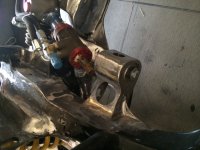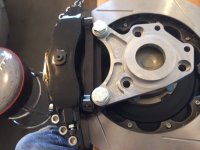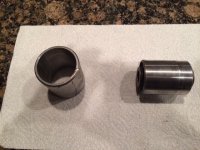69427
The Artist formerly known as Turbo84
I'm having a mental block at the moment, and unless someone can straighten me out soon I'm going to have to revert to a bunch of geometry calculations to make this issue make sense (I can do the math faster than I can build a model of the steering linkage to solve this). I'm interested in seeing if I can change the steering rack location so that when cornering the lightly loaded inside tire will steer/rotate a larger angle than the heavily loaded outside tire. I'm trying to figure out if the increased angle of the inner tire will allow the it to contribute more to the cornering effort if it is made to run at a higher slip angle. Two questions:
1) Am I full of crap?
2) Do I move the rack forward or backward ('96 C4 suspension with front steer rack)?
Thanks for any help,
Mike
1) Am I full of crap?
2) Do I move the rack forward or backward ('96 C4 suspension with front steer rack)?
Thanks for any help,
Mike



